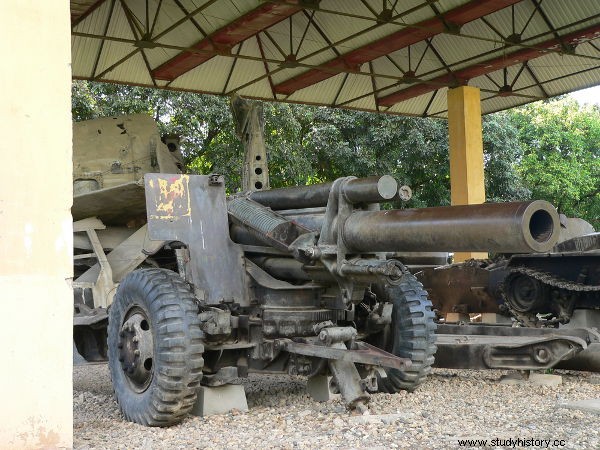
The Indochina War was a conflict between Vietnamese troops and French colonial troops that took place between 1946 and 1954. The Vietnamese, led by the Vietminh group from Ho Chi Min , aimed to put an end to the colonial rule of the French in the region. The Indochina War marked the independence of Laos , Cambodia and Vietnam . The latter was split into two separate entities:North Vietnam and South Vietnam l.
Formation of Indochina
The region known as Indochina French had been formed during the period of neocolonialism, with the invasion and occupation of the French throughout the second half of the 19th century. French Indochina corresponded to the junction of Laos, Cambodia and the three Vietnamese kingdoms:Annam, Tonkin and Conchinchina.
The French rule in Indochina lasted until the period of World War II, when the region was invaded and taken by the Japanese. Japanese control and the demoralization of the French in the region contributed to the strengthening of emancipation movements and, thus, the Revolutionary League for the Independence of Vietnam emerged. . This communist-oriented group, led by Ho Chi Minh, became better known as the Vietminh.
The Vietminh's first step was to ensure the expulsion of the Japanese rulers and, therefore, the group allied with the Americans, Chinese and French resistance during the war. The Vietminh's activities took place mainly in northern Vietnam (Tonkin) and, with the victory in the war, the Vietnamese communists took possession of that territory.
The Vietnamese occupation and subsequent declaration of emancipation were a response to the division of the country – defined at the 17th parallel – that had been determined by the Allies. The northern part, which had been designated for Chinese occupation, became a republic commanded by the communist Vietnamese. The southern part continued to be commanded by the French.
The tension between North and South and the French intention to regain colonial control over the whole country led the French to attack northern Vietnam in 1946, in the so-called Incident from Haiphong . This incident marked the beginning of the war between the Vietnamese and the French.
Indochina War
With the start of the war against the North Vietnamese, the French government quickly sent a contingent of 200,000 troops to northern Vietnam with the aim of dominating the region and defeating the Viet Minh. . The French armies were formed, for the most part, by colonial troops whose soldiers came from different places:Algeria, Morocco, Cambodia, etc.
Vietminh troops adopted guerrilla tactics to fight the French troops and, thus, promoted sabotage actions and high-intensity attacks, with strategic escapes against the French army. This tactic was adopted mainly because of the Vietnamese's lower fire capacity, which did not allow them to sustain direct and frontal attacks against the French.
From 1949, the Vietnamese began to receive armaments and supplies in general from China and the Soviet Union. This new support came after the Chinese Revolution 1949, which turned China into a communist nation. France, in turn, began to count on the support of the United States, which feared that Chinese influence would transform Vietnam and other countries in the region into communist nations.
War ensued during the early 1950s and began to take a toll on the French government. A campaign in French society began to demand an end to the conflict and the withdrawal of colonial troops from the region. The French government, cornered, chose to organize a strategy with the objective of definitively weakening the Vietminh.
The French then decided to occupy the city of Dien Ben Phu to, from there, carry out a series of incursions into the mountains of the northern part of Vietnam with the aim of weakening the Vietminh and closing their routes of escape and arrival of supplies. The fighting that followed at Dien Bien Phu was decisive for the end of the war.
However, the French strategy at Dien Bien Phu was a major failure , as the city, surrounded by mountains, was besieged and heavily bombed by the Vietnamese led by Vo Nguyen Giap . The French abandoned this territory after having grieved a total of 2,000 dead when the Vietnamese began to attack the city from the ground.
Vietnam Independence
With the defeat at Dien Bien Phu, the French agreed to negotiate the terms of a ceasefire with the Vietnamese during the Geneva Conference in 1954. At that conference, it was agreed that the colonial rule of the French in the region would be ended and the independence of Laos and Cambodia was also defined.
Vietnam's independence maintained the division imposed on the 17th parallel, with the forecast of unifying North and South Vietnam after the general elections, scheduled for 1955. With the maintenance of the division in the country, the rivalry between the two entities, amplified by the bipolarization of the Cold War, provoked a new conflict in the region:the Vietnam War.
